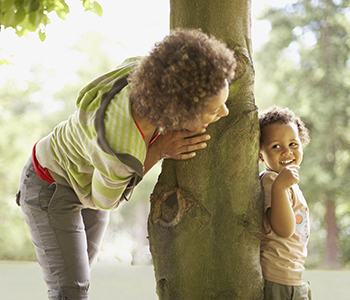How to Build Buffers Against ACEs and Their Consequences
 Children’s earliest experiences directly affect the architecture of their developing brains, which then provides either a sturdy or a fragile foundation for all the development and behavior that follows. Because of this, adverse experiences during childhood can negatively impact developing brain architecture and have lifelong impacts. In fact, according to a recent federal report, at least five of the top 10 leading causes of death are associated with adverse childhood experiences (ACEs).
Children’s earliest experiences directly affect the architecture of their developing brains, which then provides either a sturdy or a fragile foundation for all the development and behavior that follows. Because of this, adverse experiences during childhood can negatively impact developing brain architecture and have lifelong impacts. In fact, according to a recent federal report, at least five of the top 10 leading causes of death are associated with adverse childhood experiences (ACEs).
“If you look at a community’s prosperity, all of these different health and behavioral concerns have been found to have a direct dose response relationship with adversity in childhood,” says NICHQ Project Director Loraine Swanson, MPH. “So, if we want healthy communities, we really need to look at preventing and mitigating adversity in childhood as one of the key components to get us there.”
The best way to address ACEs is to prevent them. But, even under optimal circumstances, adversity is sometimes unavoidable. Fortunately, according to the Centers for Disease Control and Prevention, families and communities can actually create buffers that protect children from many of the negative health and life outcomes that stem from adversity.
Promoting these protective factors, or buffers, is a vital way that public health professionals, health care providers, families, and policy makers can help more children have a healthy future.
Child Trends recently released several important resources that provide research-based guidance and new data to inform decisions about how best to meet the needs of all children and their families in the midst of COVID-19. Please see these vital resources below.
|
These buffers can and should stem from both families and communities, because adverse experiences are present across the spectrum of children’s early experience, says Swanson. “We need to account for the conventional ACEs, which focus more on household disfunction, and for those associated with adverse community environments. With this framework, we can think about how to help families and communities offer buffers that are protective against ACEs, so that children have every opportunity to build resiliency.”
Helping families create buffers
Research shows that responsive parent-child relationships during the early years of life not only foster healthy brain development, but also protect the brain against the harmful effects of toxic stress that can arise from ACEs. By engaging in responsive relationships with their children, then, parents can help mitigate the effects of ACEs that may be outside of their control, such as those stemming from adverse community experiences. Moreover, strong parent-child relationships also help children build lasting resiliency—the relationships themselves are buffers against the effects of external hardships children might experience.
Related Resource for Pediatric Health Professionals
You can find specific strategies to help strengthen parent-child relationships through the well-child visit here.
Health professionals can help families engage in responsive relationships by talking to families about the importance of serve-and-return interactions during early childhood. These back-and-forth interactions between children and their parents and other family members (e.g., when parents hug their baby when crying) are the building blocks for healthy brain development and provide buffering protection. Through serve-and-return interactions, parents teach their children how to navigate stressful experiences, regulate their emotions, and self-soothe.
Policies that increase funding for home visiting services during pregnancy and after birth are vital for helping parents establish these responsive relationships, says Swanson. Home visitors can provide needed support during early months when parents may feel overwhelmed caring for their new baby. “We have this culture where if you have to ask for help, you’re not seen as a strong family, and we have to change that,” says Swanson. “One of the CDC’s biggest recommendations for mitigating adversity is promoting safe, stable, nurturing environments and relationships; sending families home with a newborn without some added support doesn’t set any one up to succeed.”
Similarly, federal and state policies that require paid-parental leave after birth and organizational policies that allow for flexible schedules and sick time to care for children also give parents the time and freedom to develop strong, nurturing relationships with their children.
Supporting community-based buffers
By looking beyond the home to the community environment, we can give children even more opportunities to develop buffers against the effects of ACEs, says Swanson. This is especially important as children move from infancy to adolescence and then into adulthood.
In the early years of life, all children should have access to high quality child care where they can experience safe and nurturing relationships. As children grow older, schools are another opportunity for children to foster strong buffering relationships and, if they are struggling with the effects of trauma, connect with additional resources and support. Public policies that support trauma-informed schools can help ensure that teachers, administration and staff are trained to recognize children who are affected by trauma, offer appropriate responses, and refer them to supportive services and interventions when necessary.
As children mature, they can benefit from numerous community-level buffers, from participating on sports teams to engaging in the arts or faith-based activities to volunteering. “It’s all about creating healthy peer relationships and figuring out what is meaningful for each person,” says Swanson.
“The important thing to remember is that throughout a person’s life there are a number of opportunities for buffers that can continue to help offset the adversity they experienced in childhood.”
Interested in learning more about preventing and responding to early childhood trauma? Read this recent article about California’s work to launch universal early childhood trauma screenings.
